This post and the photos within it may contain affiliate links. If you purchase something through the link, I may receive a commission at no extra charge to you.
Can you do calligraphy with a pencil?
Yes, 100%.
In fact, pencil calligraphy might just be one of the best ways for you to start practicing the art of calligraphy.
In this tutorial,
I will teach you everything you need to know about doing pencil calligraphy.
Here is a quick overview of this tutorial –
- The benefits of pencil calligraphy
- Which pencils are best for calligraphy? Understanding the different pencil types
- Other tools needed for pencil calligraphy
- How to prepare the pencil for calligraphy
- How to do calligraphy with a pencil (basic calligraphy strokes)
- Pencil calligraphy alphabet
- Free pencil calligraphy worksheets
- Final words
So, without any further delays,
Let’s jump straight into this tutorial.
If you prefer to watch, I also created a YouTube video for you –
The benefits of pencil calligraphy
Before we start writing letters, I wanted to give you insight into the benefits of beginning calligraphy with a pencil.
The pencil is probably the most underrated yet one of the most powerful tools you could have.
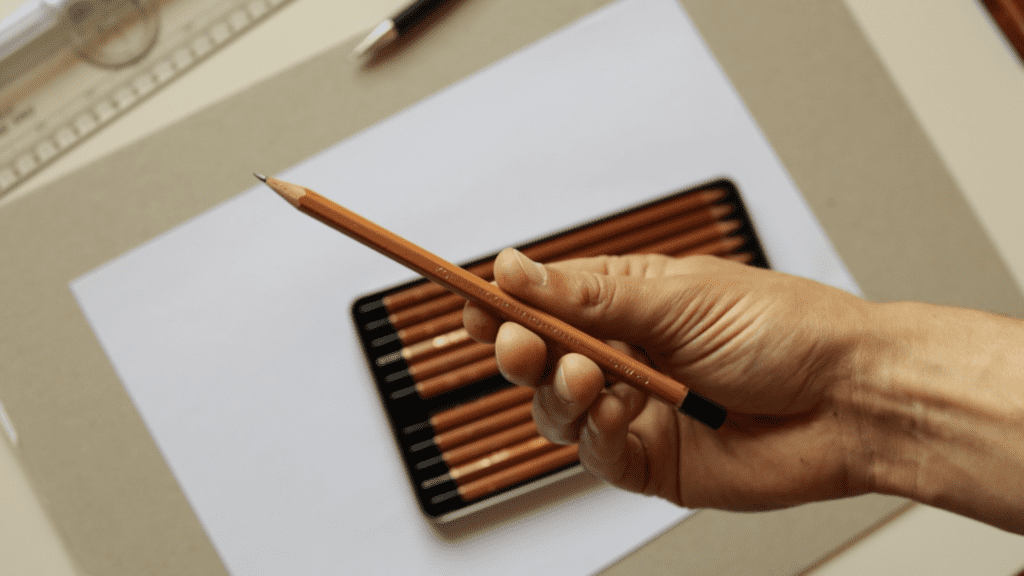
The most obvious benefit is that it’s cheap.
It’s probably the cheapest writing tool you could find, and chances are that you have a pencil lying around your house.
The pencil is incredibly versatile and can create a wide variety of marks.
Did you make a mistake? No problem.
Just grab an eraser, and you’re good to go.
However, when talking about calligraphy, the pencil has a unique feature.
It can change the size of its mark based on the amount of pressure we add as we write.
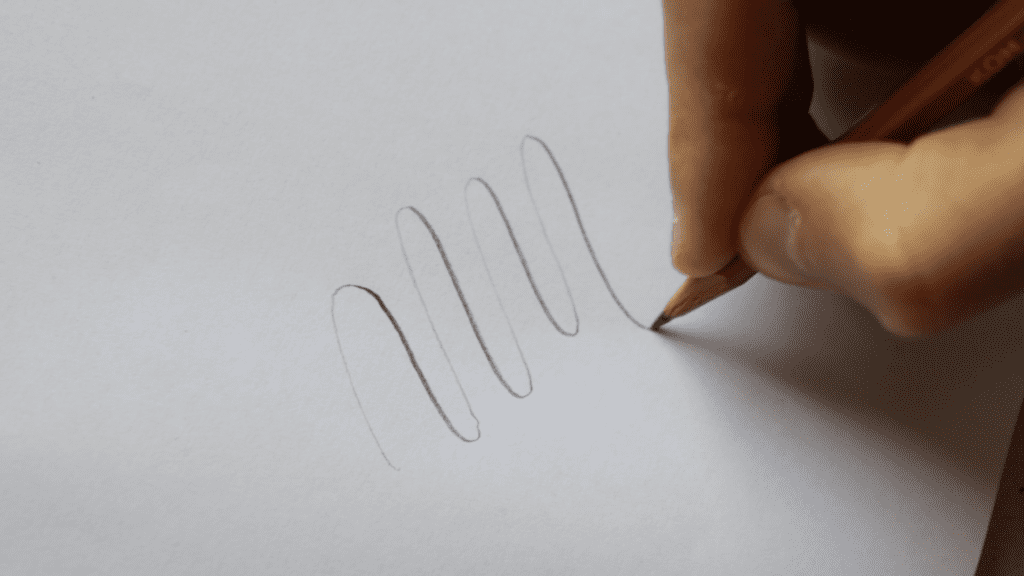
A feature that is key for doing calligraphy.
That’s a pretty cool feature on top of all the other things I previously mentioned.
But that’s not all.
Pencil calligraphy is especially great for beginners for another reason, and that reason is –
The learning curve of a traditional calligraphy pen (a dip pen with a pointed nib).
You see,
When you start to learn calligraphy, you’re facing various new things you have to learn (to name a few) –
- Learning how to write letters in a particular calligraphy style (sizes, proportions, etc.)
- Maintaining a level of consistency and rhythm,
- Learning how to work with a dip pen and a pointed nib (also preparing and maintaining the tools).
It’s definitely not like holding a regular pen (or pencil), and it is something many beginners struggle with.
A massive benefit of starting to practice calligraphy with a pencil is the fact that you can focus on learning the basic calligraphy strokes and letterforms without trying to figure out how the traditional tools work.
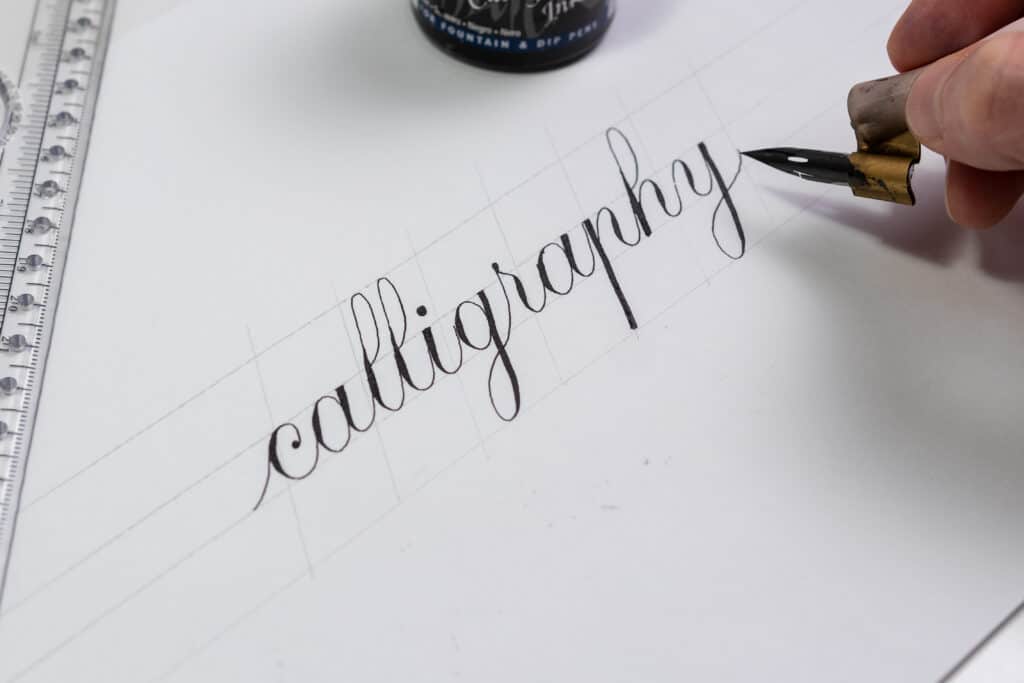
In other words – I believe that if you start practicing calligraphy with a pencil, you can get better results in less time.
So to recap the benefits of learning calligraphy using a pencil –
- It’s cheap
- It’s versatile
- You can erase it
- Sensitive to pressure
- The low learning curve of the tool – You can put a high level of focus on learning the basics of writing calligraphy
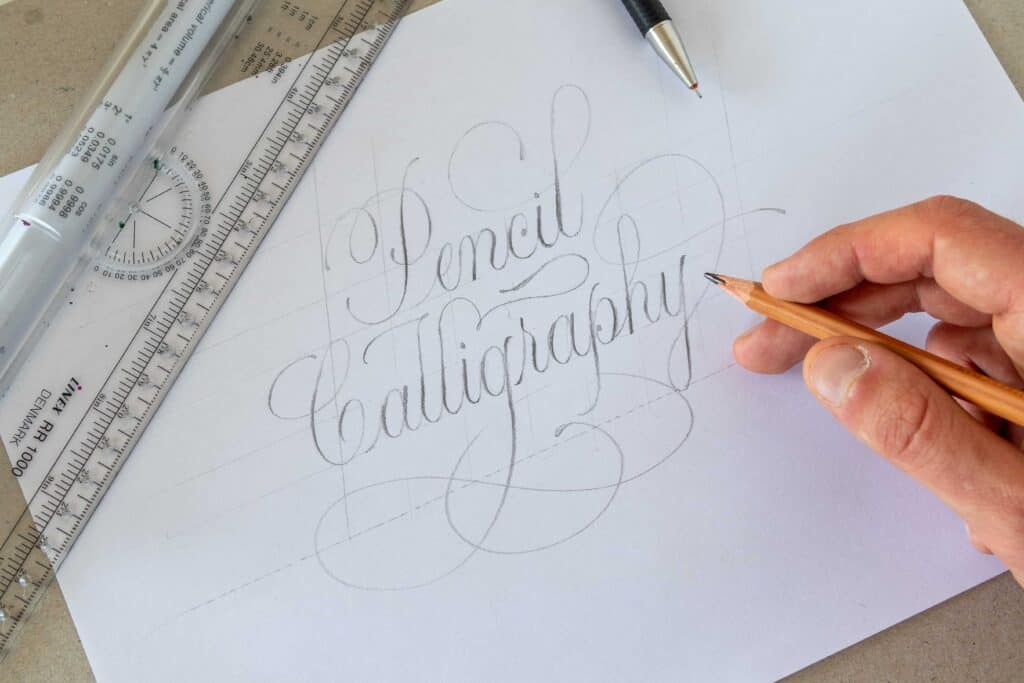
Which pencils are best for calligraphy? Understanding the different pencil types
The best pencils for calligraphy are any pencils with a mark B or higher.
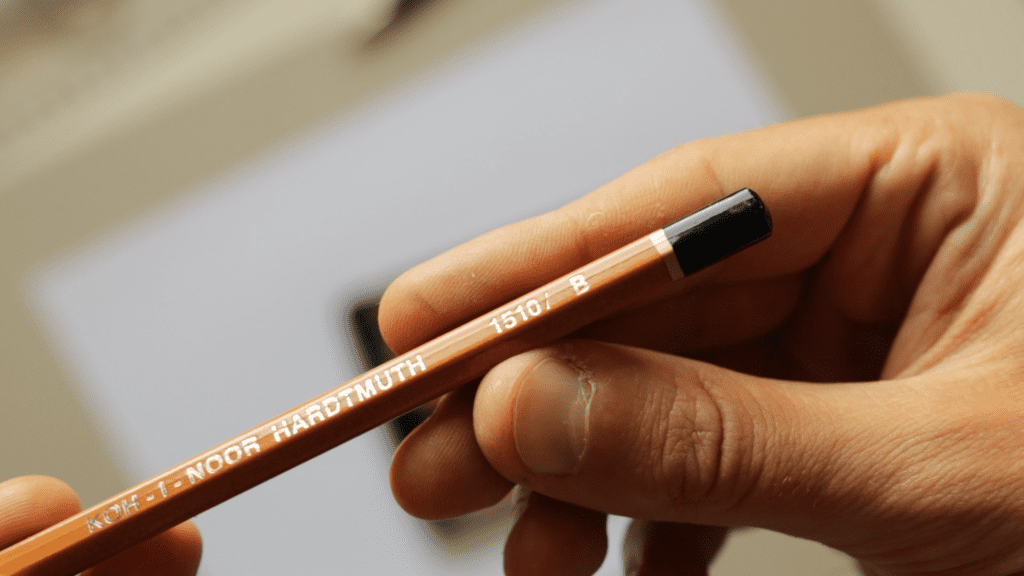
Here is why.
There is a variety of pencils that you can choose to work with.
And yes, each type will give a slightly different look.
Understanding these different types of pencils can be helpful not just for calligraphy but also for other art forms.
Luckily the gist is pretty simple.
The way pencils differ from each other is by the lead (graphite) inside them.
The lead can either be soft or hard, and it’s usually marked at the end of the pencil with a combination of letters and numbers.
Commonly we can find the following marks –
- H – Hard
- B – Black
- HB – Hard Black
- F – Firm
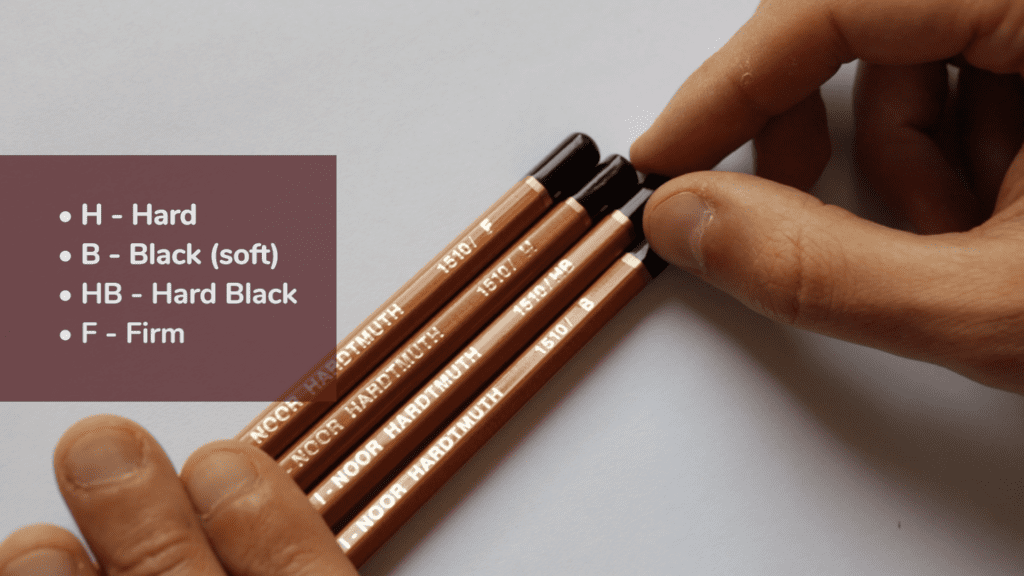
Black is soft, just so you dont get confused by it.
Basically, the harder the lead (graphite) is, the lighter the pencil’s mark will be.
The softer the lead (graphite) is, the darker the pencil’s mark will be.
These marks are numerically scaled, which indicates how soft or hard the lead is.
For example – an 8B pencil is much softer than a 2B pencil, meaning it will create a darker mark on the paper.
You can check the image below to better understand how the scale works.
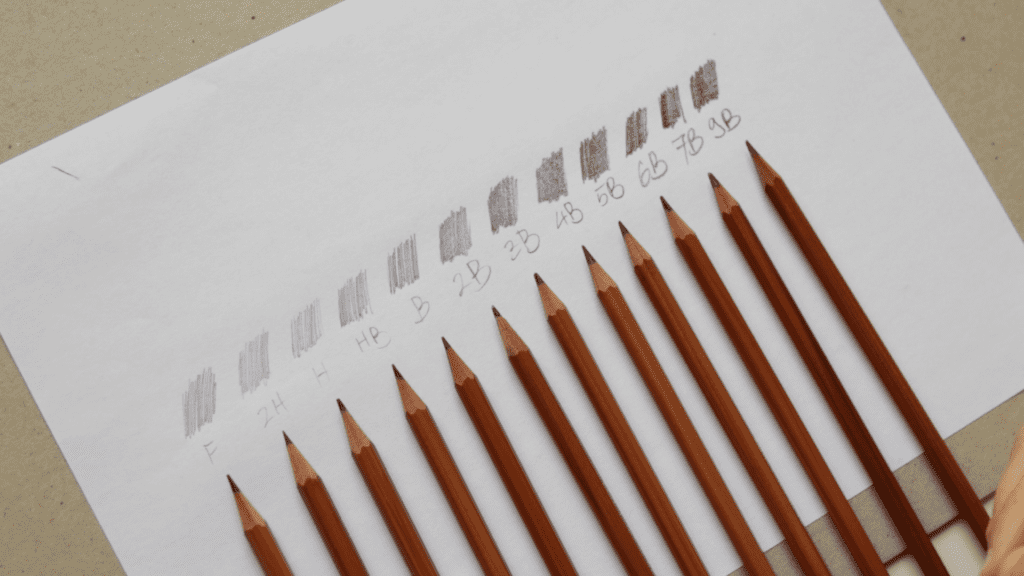
When it comes to pencil calligraphy, you can use any pencil you want.
However, I recommend working with pencils on the B scale as it’s easier to achieve a more significant contrast between the thick and thin lines, which is a key element for calligraphy.
Personally, the 2B is the one I prefer the most.
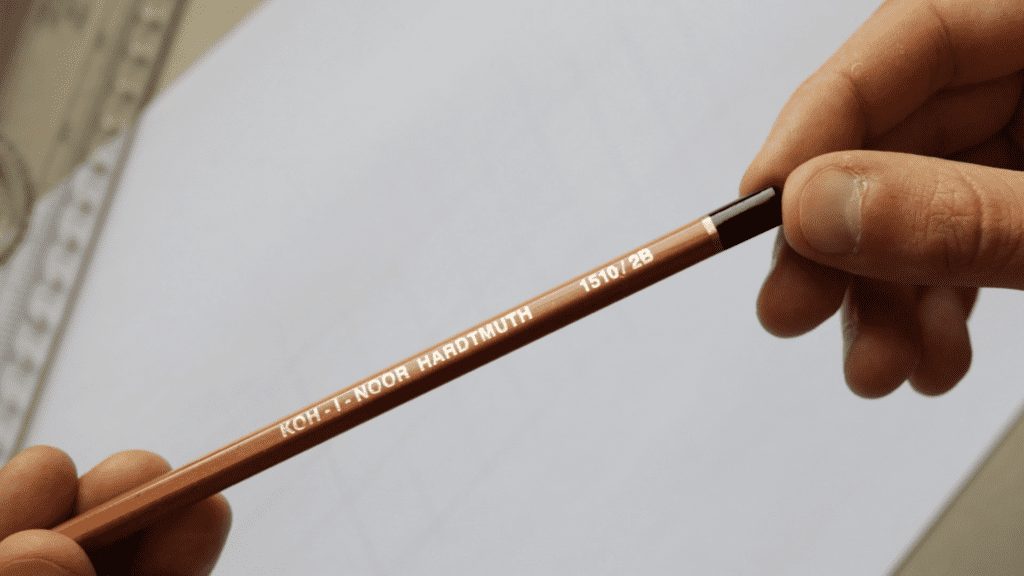
You could also work with a mechanical pencil.
Just make sure that it’s one with a thicker lead.
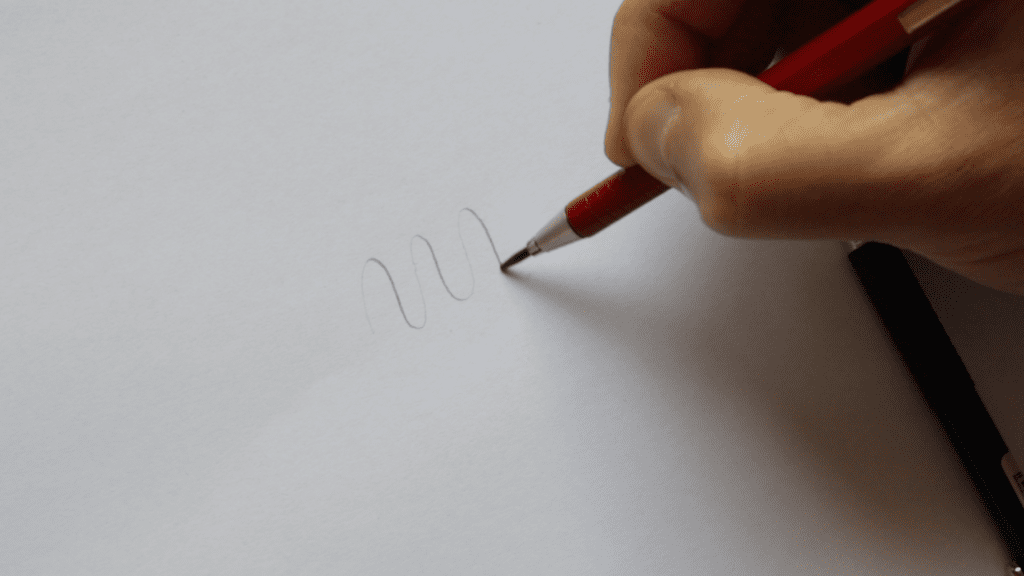
The one with a small lead can’t achieve a good contrast, and it breaks fairly easily.
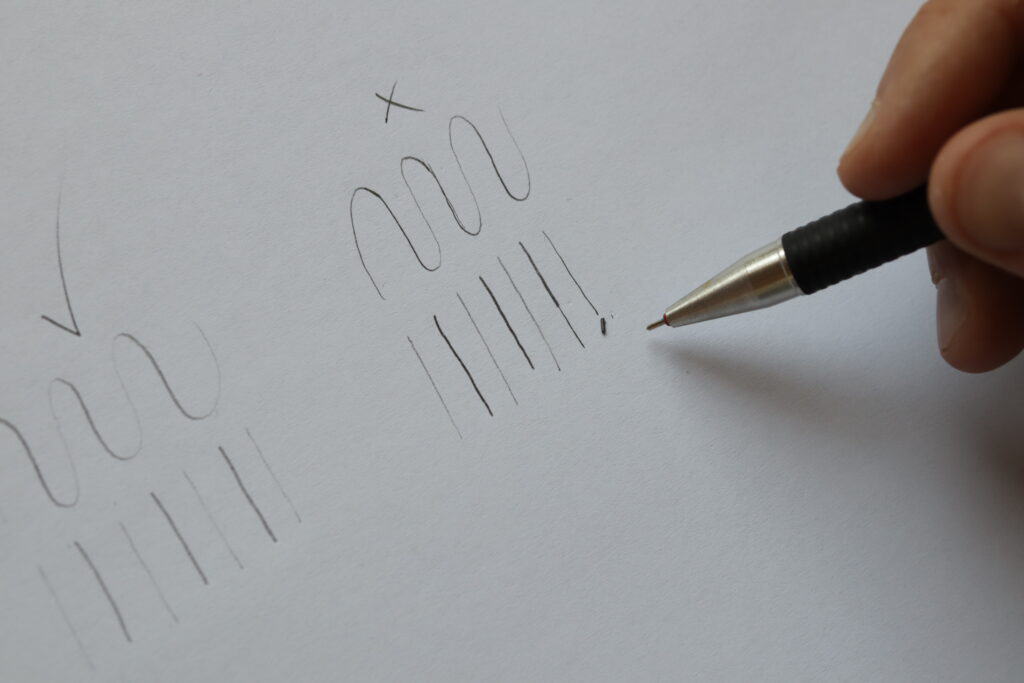
Other tools needed for pencil calligraphy
Aside from a pencil, you’ll just need a few more things to start practicing pencil calligraphy.
Let’s briefly go one by one.
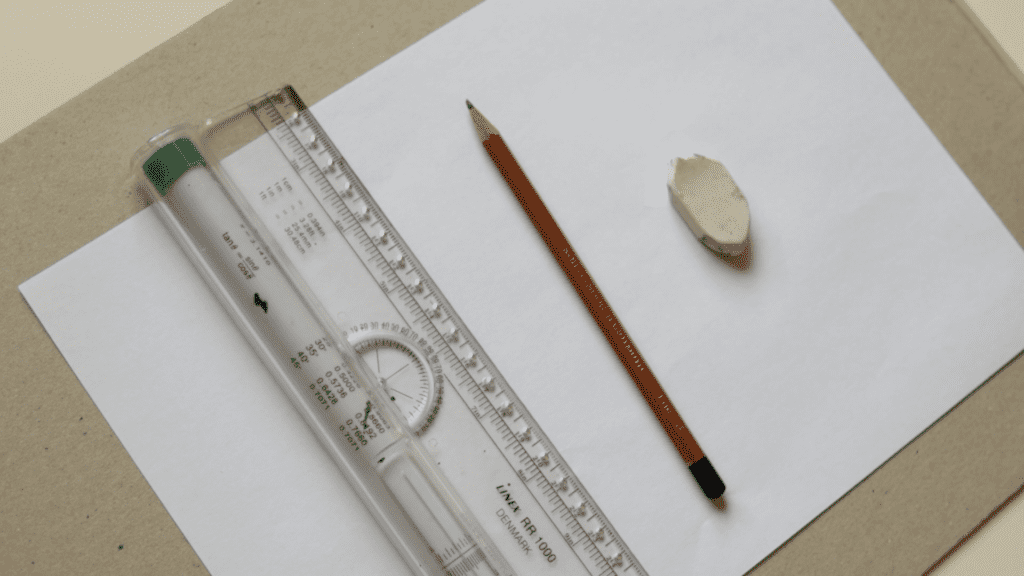
Paper:
Another massive benefit of pencil calligraphy is that you can work with pretty much any type of paper you have.
That means you’re saving more money on tools and supplies for practicing calligraphy.
You can’t really do that with brush pens or if working with ink and nibs.
Of course, different papers will give a slightly different look to the pencil marks, but you don’t have to worry about that right now.
To learn more about calligraphy papers, check out my separate guide.
Ruler:
We need a ruler to create calligraphy guidelines. I made a separate video/article on why and how to create calligraphy guidelines. The ruler I always use and constantly recommend is the rolling ruler.
Eraser:
We all make mistakes. Personally, I rarely use one when doing pencil calligraphy, but it’s good to have one nearby just in case.
How to prepare the pencil for calligraphy
I wanted to mention a quick tip on how to prep the tip of the pencil for calligraphy. (pun intended).
Grab your pencil, and using a sharpener, sharpen your pencil as you usually would.
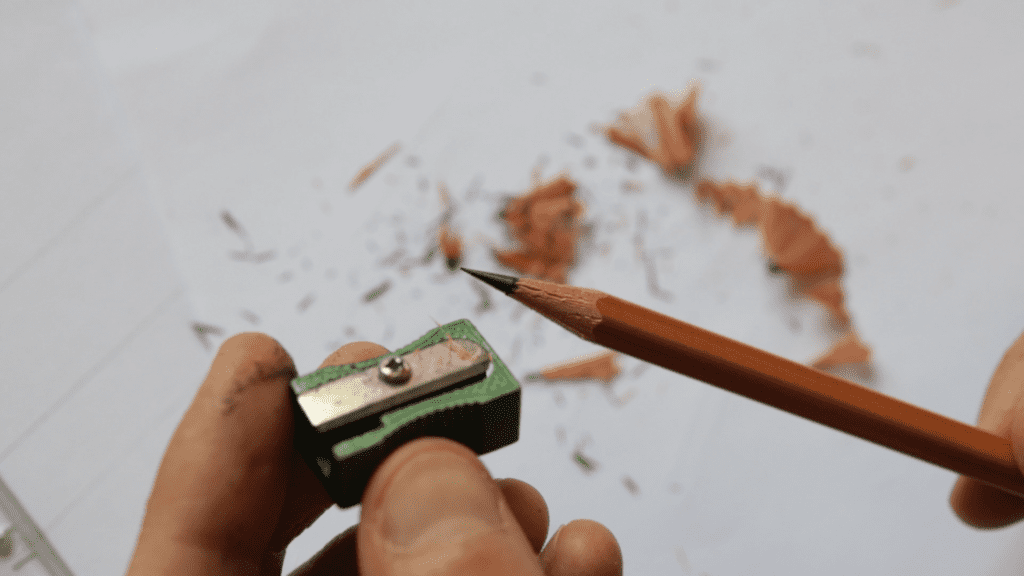
Then grab a scrap piece of paper and, with quick left/right motions, dull the tip of the pencil, like this –
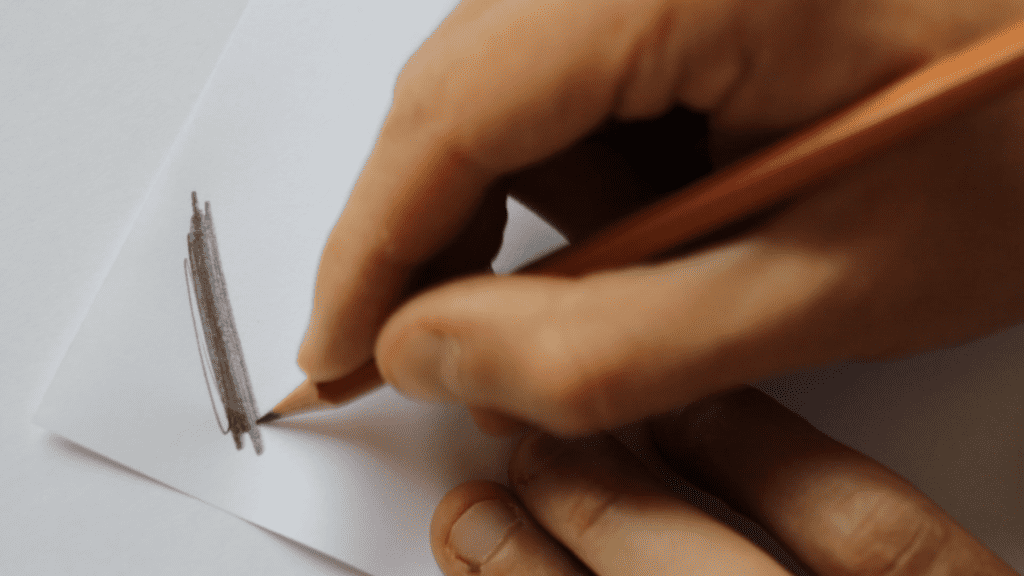
By dulling the tip of the pencil, we can create the much desired thick and thin contrast.
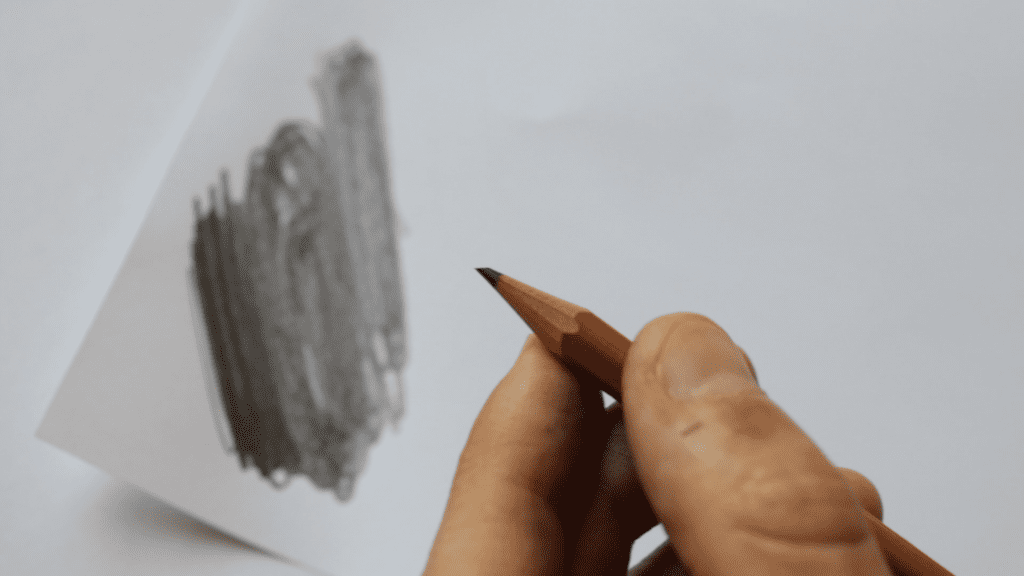
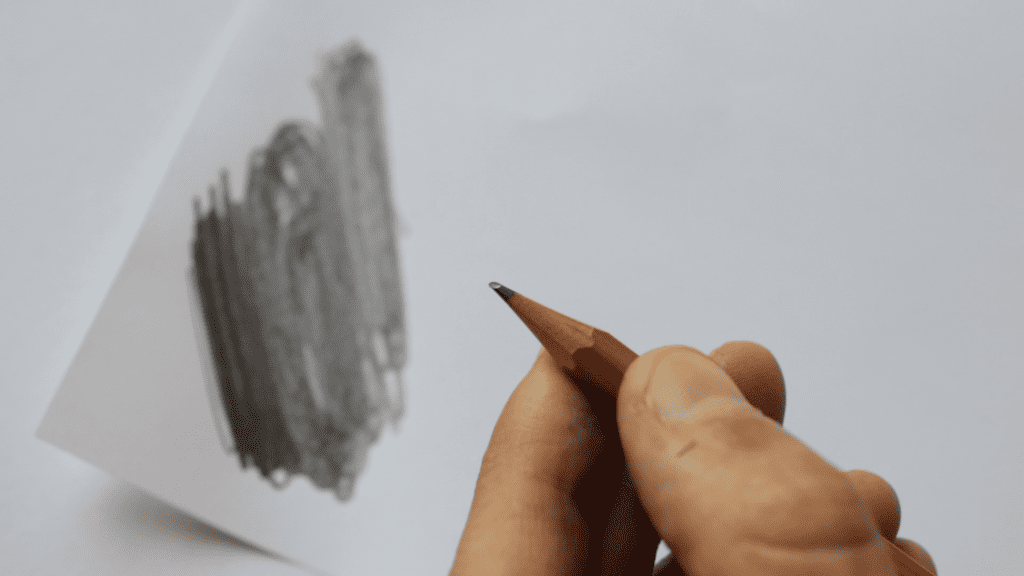
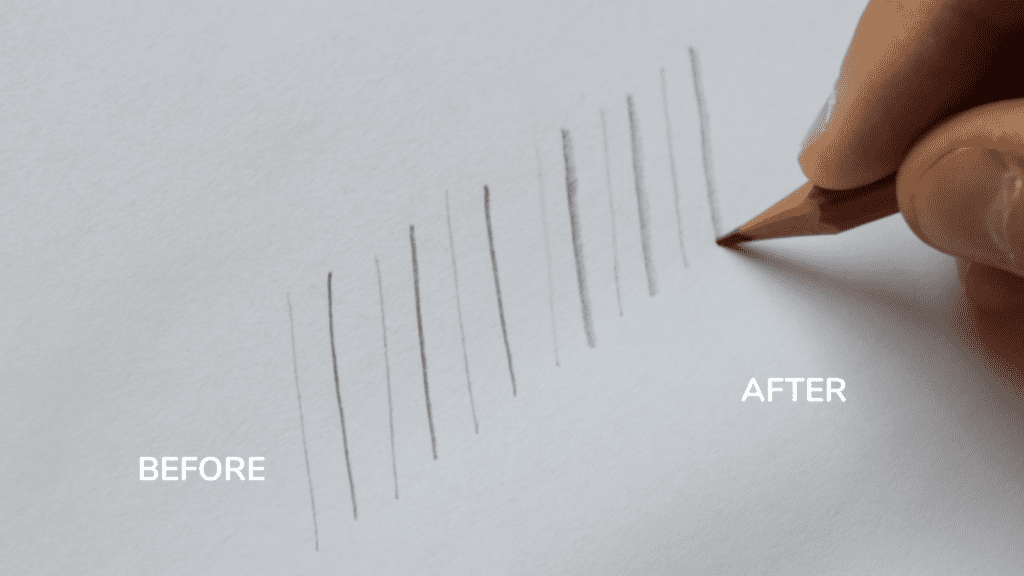
How to do calligraphy with a pencil (basic calligraphy strokes)
In this tutorial, I’ll focus on calligraphy styles usually done with either a pointed nib or a brush pen.
These could be calligraphy styles such as Copperplate, Spencerian, modern alternations, and even capitals and minuscules created with a pointed pen.
Basically, calligraphy scripts that rely on adding and removing pressure as you write.
If you’re new to calligraphy, you probably know these styles as script or cursive.
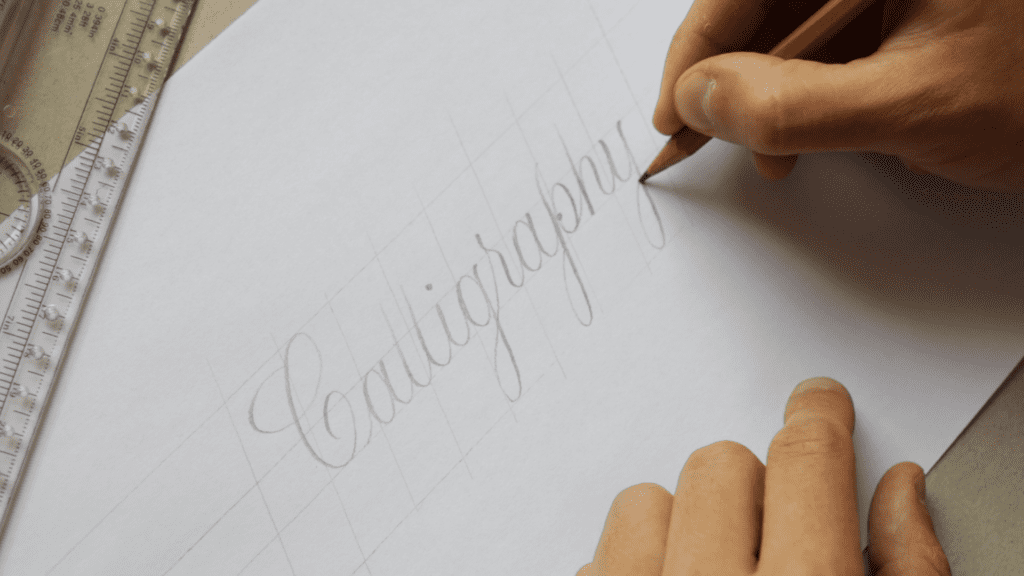
I’ll be demonstrating a modern alternation that has its basis in the copperplate script.
However, these principles can easily be applied to other styles as well.
So the fundamental idea behind these styles is –
When you move upwards with the pencil, your strokes are thin (light, no pressure)
And when you move down with the pencil, the strokes should be thick (more pressure).
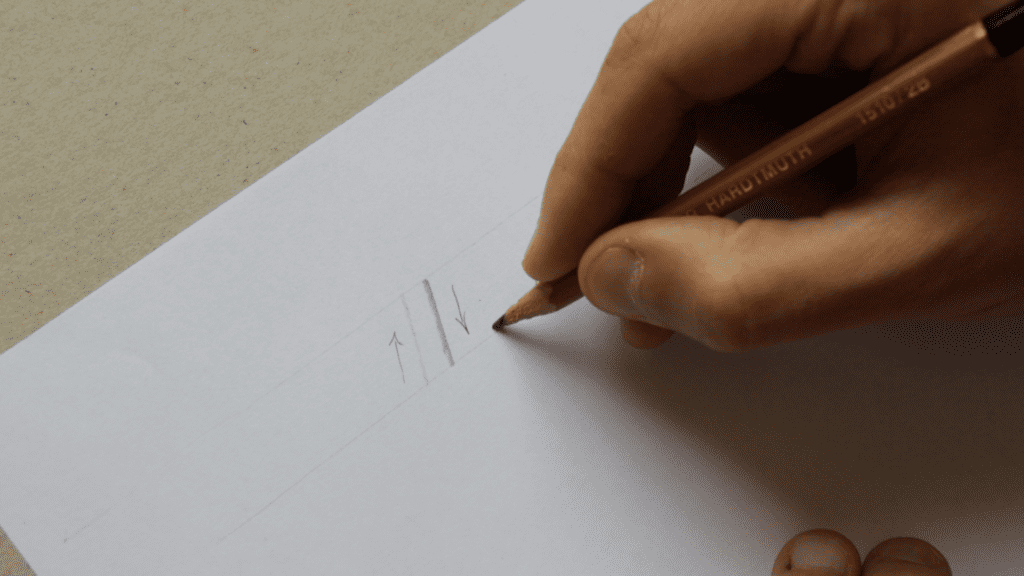
If this is your first time doing calligraphy, I would highly recommend that you begin practicing these fundamental strokes like this –
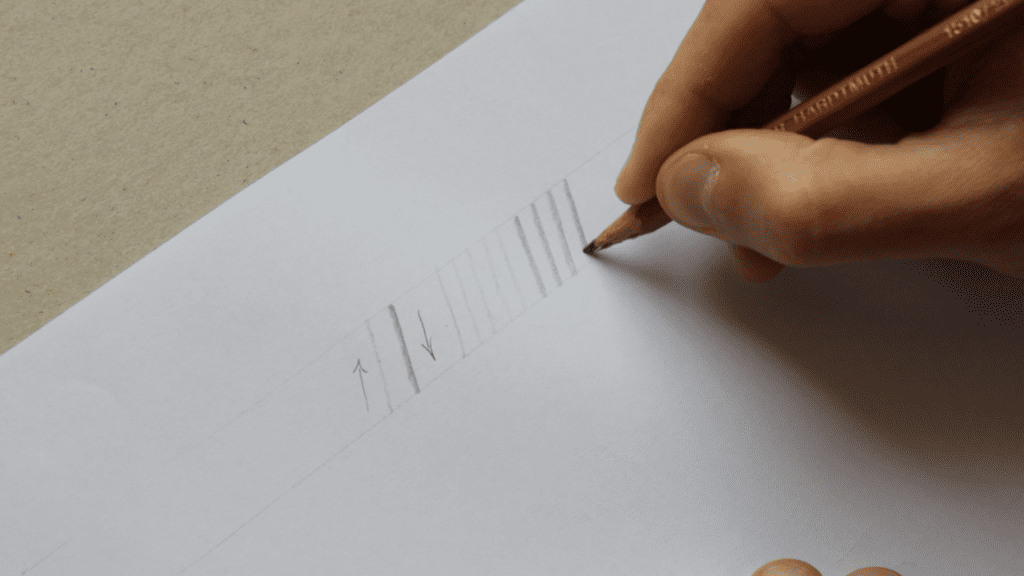
Like any other skill, Calligraphy is best learned by starting with the very basics and gradually moving towards more complex elements.
Ok, now that we know these two fundamental strokes, we can proceed toward the basic calligraphy strokes.
Before doing anything, im going to create some guidelines to keep my letters nice and consistent.
Don’t skip guidelines. They’re a crucial step here. Again, I explain the importance of guidelines in this post here.
The idea behind these strokes is very simple.
Almost all lowercase letters (aka minuscules) of the alphabet share specific shapes and strokes.
Once we take a step back and look at it, we can identify 9 basic strokes that consistently appear in different letters of the alphabet.
These basic strokes are –
- The entry stroke
- The downstroke
- The underturn
- The overturn
- The compound curve
- The oval
- The reverse oval
- The ascending loop
- The descending loop
Here you can see a visual representation of these basic strokes.

So instead of memorizing all letters of the alphabet, we learn and practice these basic strokes, and then we simply combine them in different sequences to get the letter we want.
I created a whole tutorial that teaches you more in-depth about the basic calligraphy strokes and how to use them.
Here are a few examples.
The letter a consists of an entry stroke, an oval, and an underturn.
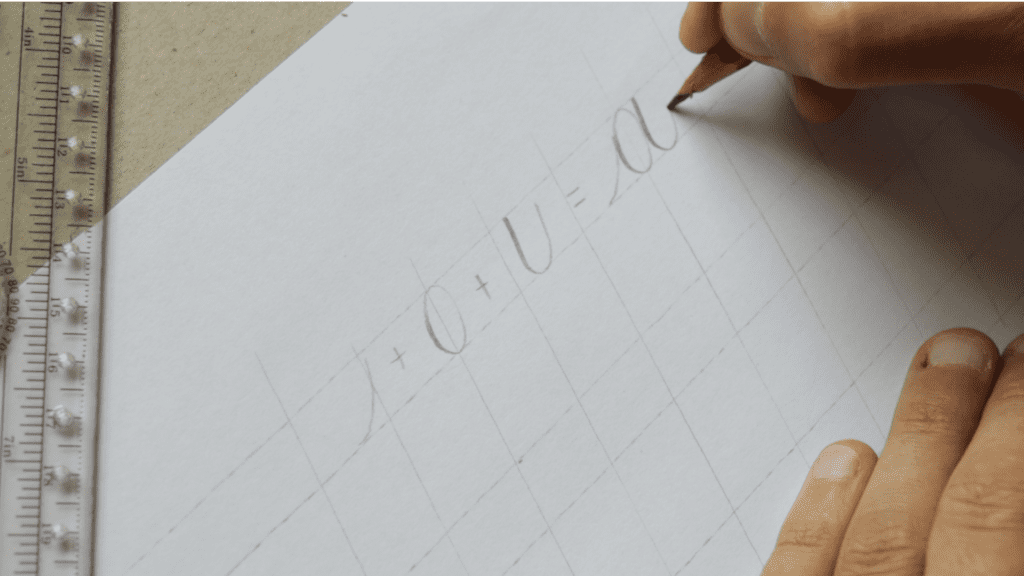
The letter m consists of a overturn, a second overturn, and a compound curve.
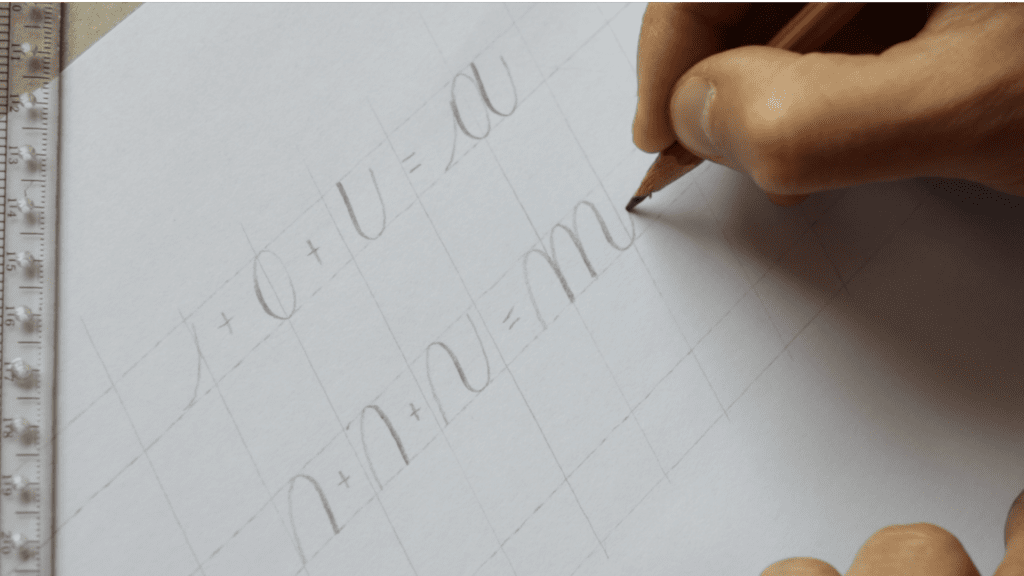
The letter g is constructed with an entry stroke, an oval, and a descending loop.
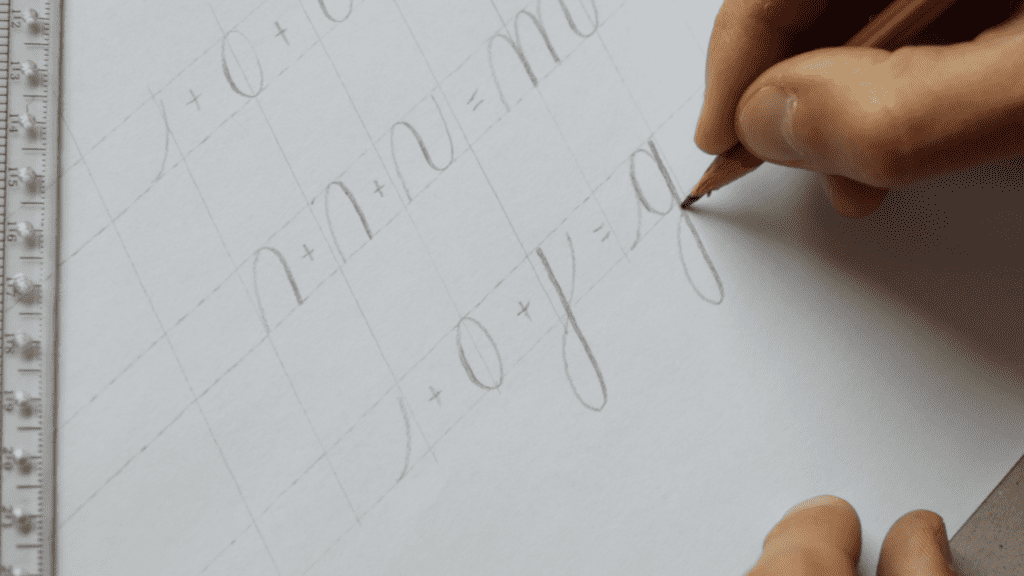
You get the point.
A few letters of the alphabet are an exception, such as – r, s, x, and f.
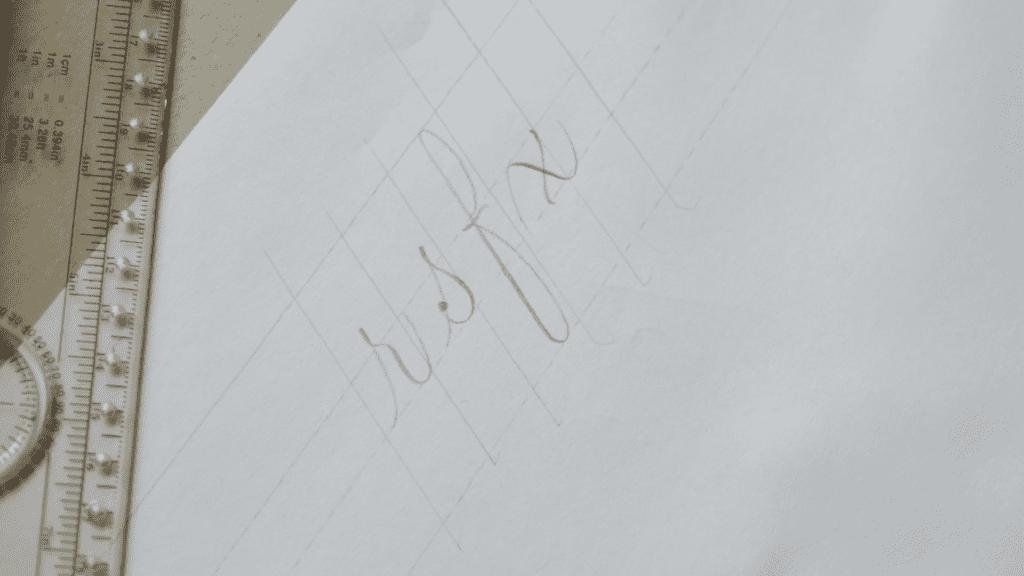
There could be more or less of these basic strokes, depending on the style.
For now, just stick to the ones I mentioned above.
The reason to learn the alphabet using the basic calligraphy strokes isn’t just to make it easier to learn how to write the alphabet.
It also allows you to achieve a higher level of precision and consistency in your calligraphy.
VERY IMPORTANT MENTION –
Calligraphy and cursive writing are two different things.
With calligraphy, you should take your time and lift the pen after each stroke to construct the letter.
Focus and precision is our main concern here.
On the other hand, Cursive writing is fluid, faster, and doesn’t require you to lift your pen after each stroke.
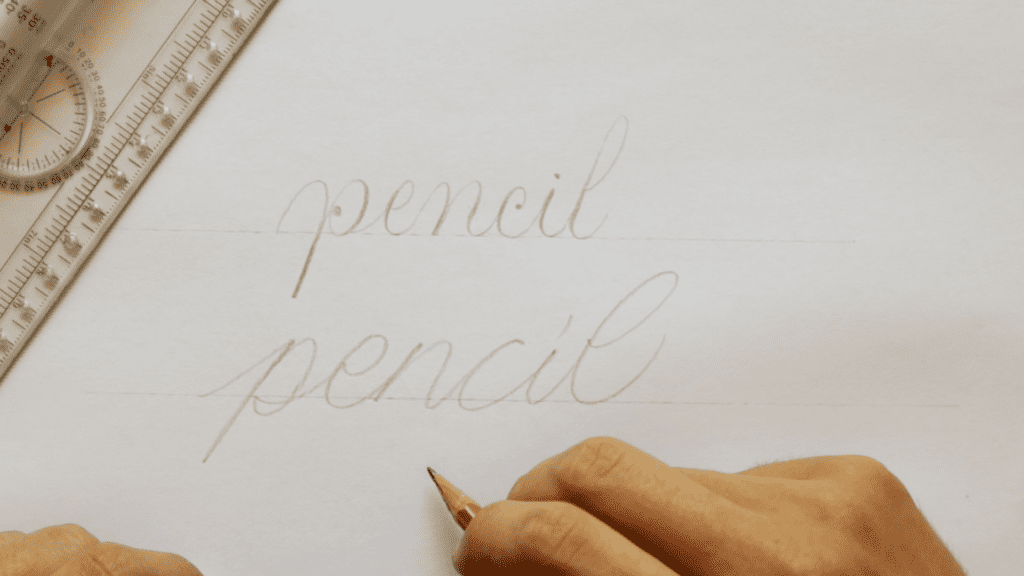
Pencil calligraphy alphabet (minuscules & capitals)
Ok, now that we have covered the basic strokes, it’s time to combine them and form our letters.
Again, if you’re just getting started, I would advise you to practice the basic stroke before attempting to create letters.
Remember what I said about moving gradually from easy to difficult.
I have these colored pencils, and for each basic stroke, im going to use a different color.
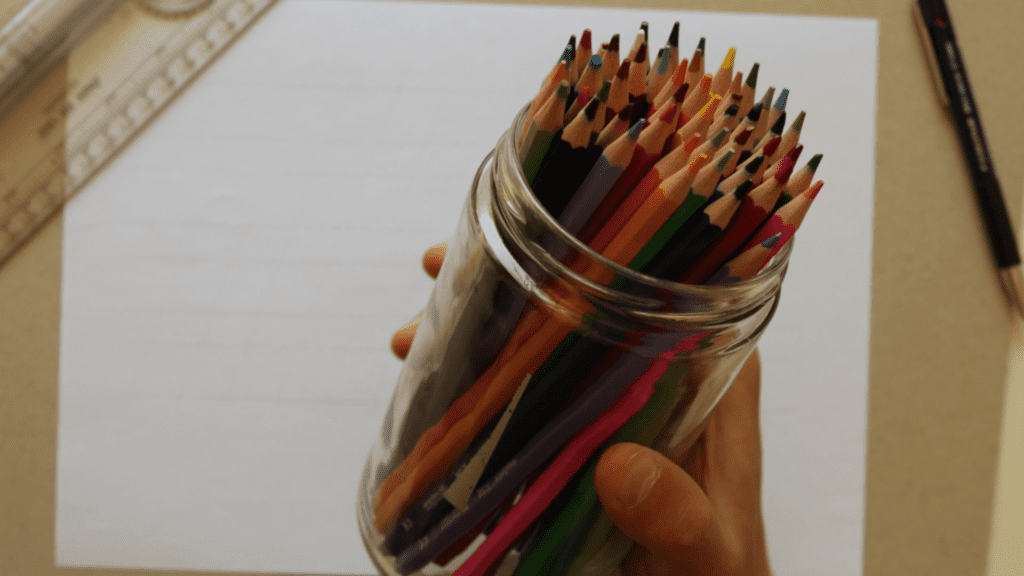
This way, you can see how the whole (most of it) is constructed with these basic strokes.
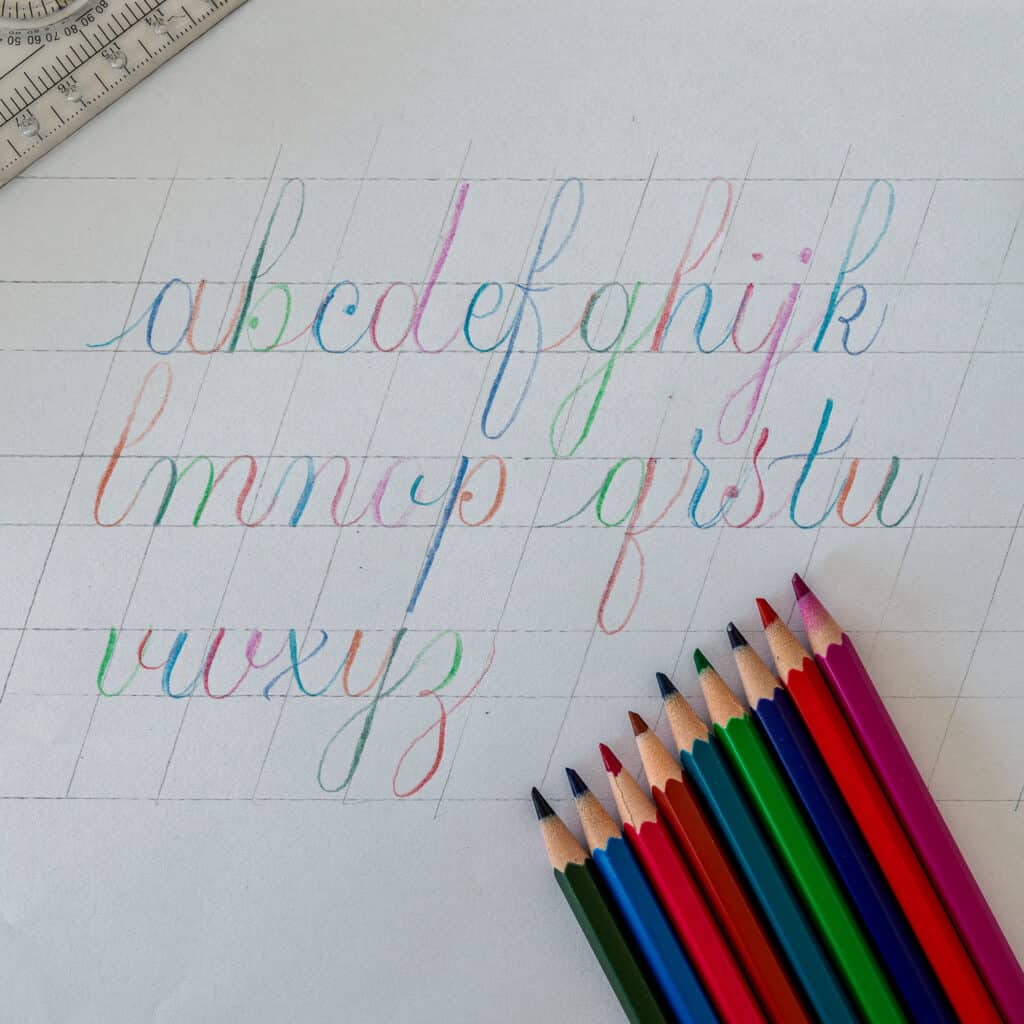
You can also see the process video in the YouTube video I created for this tutorial.
I made a separate tutorial that shows an in-depth overview of how to create a whole lowercase calligraphy alphabet.
Here you can also see an example image of the capital letters.
Again, inspired by the copperplate calligraphy script, but with my own twist to it.
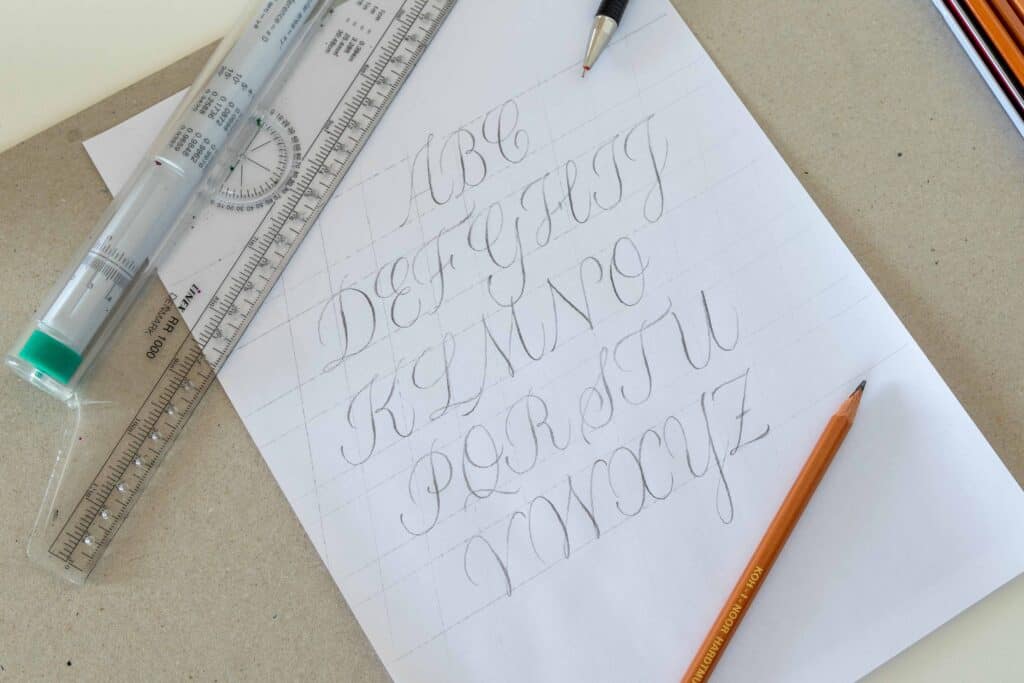
Once you get a good handle on the basics, you can start tweaking and bending letterforms. Slowly you’ll start developing your own calligraphy style.
I really enjoy traditional calligraphy, but there is something special about breaking the rules and creating something of your own.
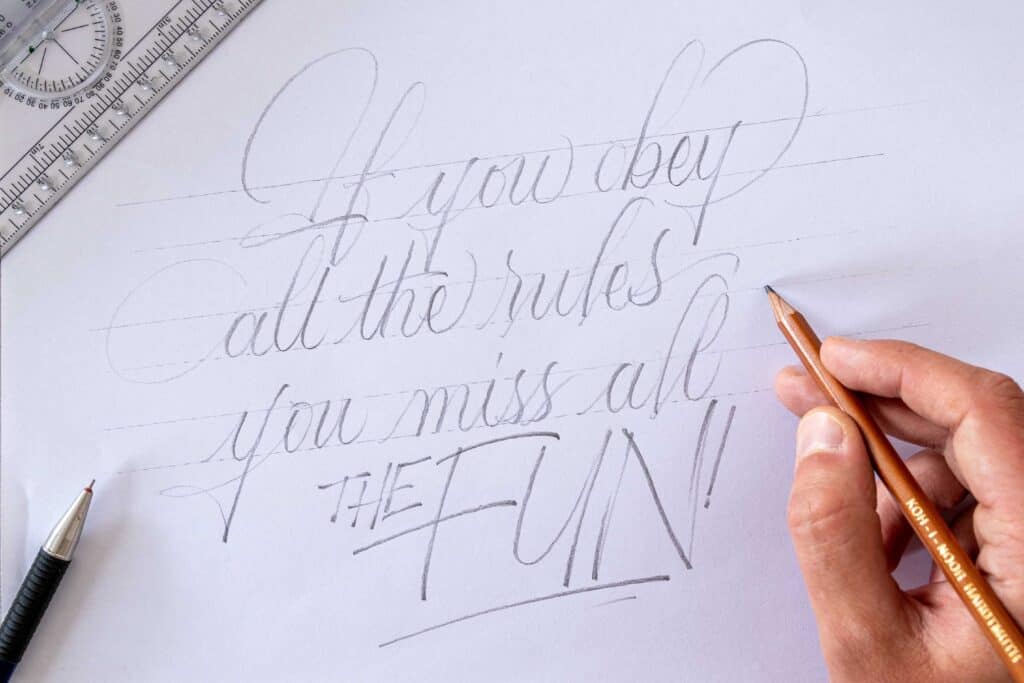
Free pencil calligraphy worksheets
I’ve created some free worksheets to help you practice calligraphy using a pencil.
You can print them on any A4 (8.5″ x 11″) sized paper.
In these free worksheets, you’ll find –
- Fundamental and basic calligraphy strokes
- Minuscules (lowercase)
- Capitals


You can grab these free pencil calligraphy worksheets straight from the Lettering Crate.
Getting access to the Lettering Crate is super easy if you’re new here.
Just sign up for the newsletter below, follow the simple steps, and immediately get a welcome email containing the link and the password for the Lettering Crate.
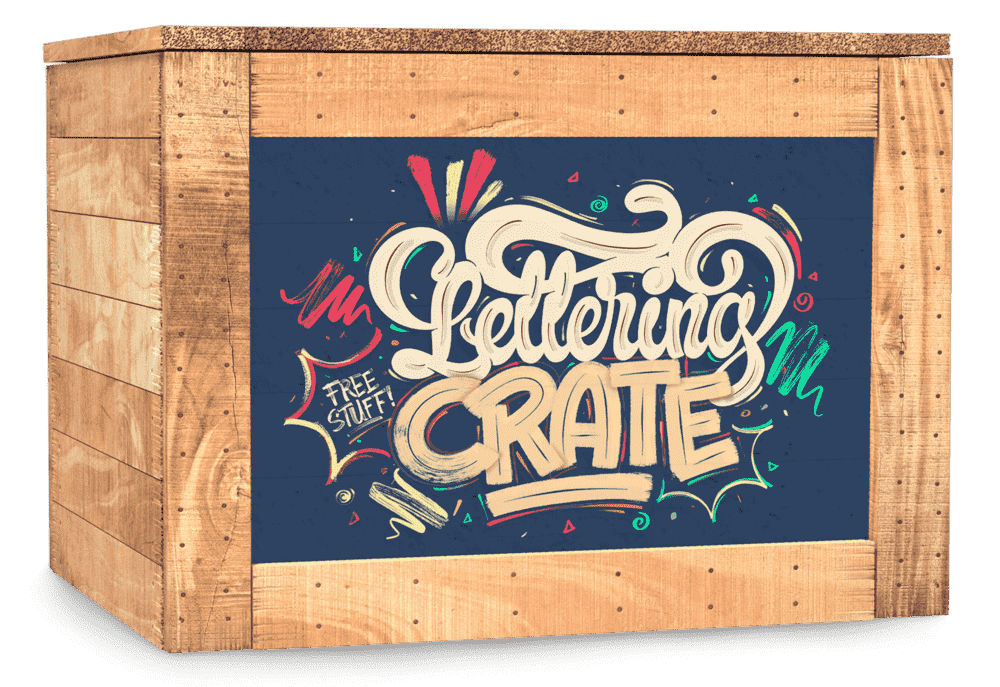
Stay updated with my tutorials and get instant access to the Lettering Crate –
A growing library of free lettering & calligraphy resources that includes –
There are a ton of freebies that you can download from there as well.
If you struggle to get the welcome email or you encounter some sort of issue, feel free to email me, and I’ll help you out right away.
Please keep in mind that it’s better to send me an email than to leave a comment on this article since I check emails daily.
Wrapping it up with a few final words
There you have it, friends.
This is how you can do calligraphy with a pencil.
It’s not rocket science, as you can see 😀
Here is a quick recap of the whole tutorial –
- The pencil has a much lower learning curve than a traditional dip pen + pointed nib. Allows you to focus more on learning how to create letterforms.
- The pencil is also very cheap, versatile, and can work with any type of (cheap) paper.
- You can do calligraphy with any pencil, but it’s best to use from 2B and above.
- You also need a ruler to create guidelines – I always recommend the rolling ruler.
- The two fundamental strokes are – up = thin, down = thick
- The alphabet is constructed with 9 basic calligraphy strokes.
- We take the time to focus and lift the pen after each stroke (unlike cursive writing).
- The best way to learn calligraphy is to move gradually from easy to more complex elements.
- Don’t skip doing calligraphy drills.
- Keep pushing yourself to create “finished pieces.”
- Have fun yo!
Btw. Did you know that you can also create broad-edged calligraphy styles such as blackletter and italic using a pencil?
Also, if you’re interested in learning about other calligraphy styles, check out my article on the 10 calligraphy styles for beginners.
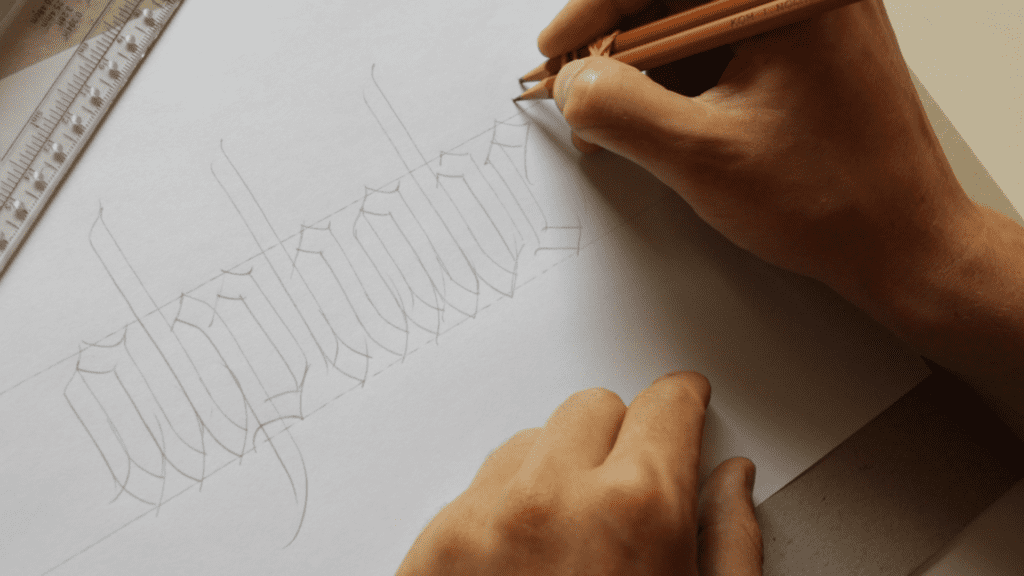
If you want to see a tutorial for that, drop a comment below.
I hope you enjoyed this tutorial,
And I’ll see you in the next one!
Pin me!
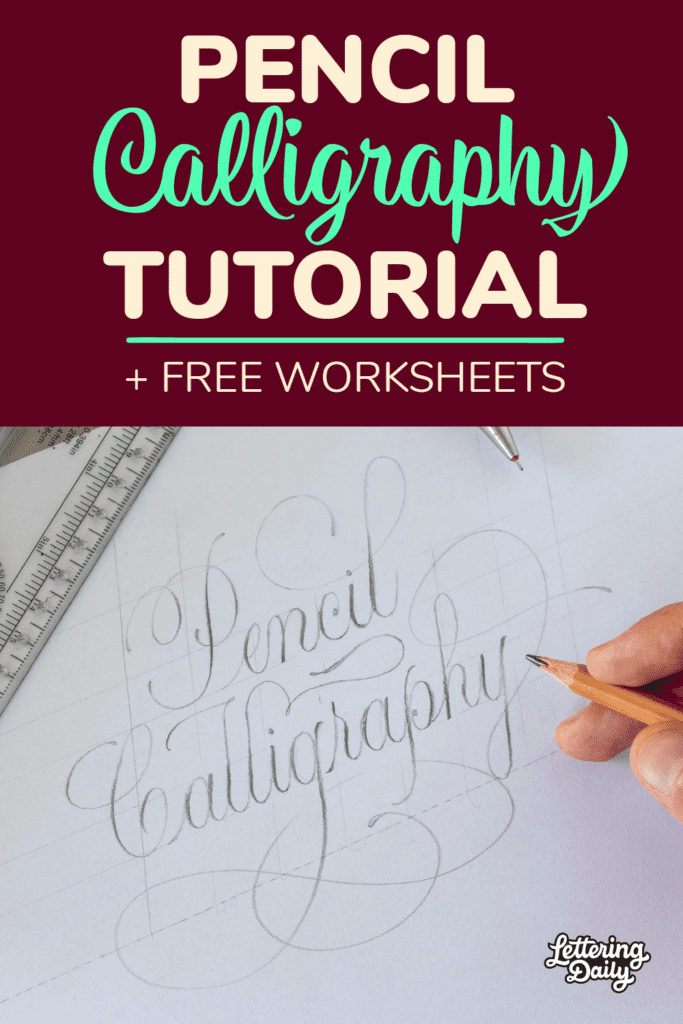
About the author

Hey, I’m Max Juric, and I’m deeply passionate about calligraphy and hand lettering.
I’ve spent years honing my skills in the art of lettering, working with hundreds of clients from all over the world on design projects such as logotypes, branding, custom lettering, murals, and more.
But my journey doesn’t end there. I’ve also dedicated myself to sharing my knowledge and expertise with others, creating a wealth of resources including tutorials, articles, and podcasts.
It’s been incredibly rewarding to see thousands of people engaging with my content each month. Knowing that I’m helping fellow enthusiasts grow and develop their skills makes me really happy.
Welcome to Lettering Daily, your hub for all things lettering and calligraphy. Whether you’re a seasoned pro or just starting out, I’m here to inspire and guide you on your lettering journey. Stick around, and let’s explore the world of letters together!

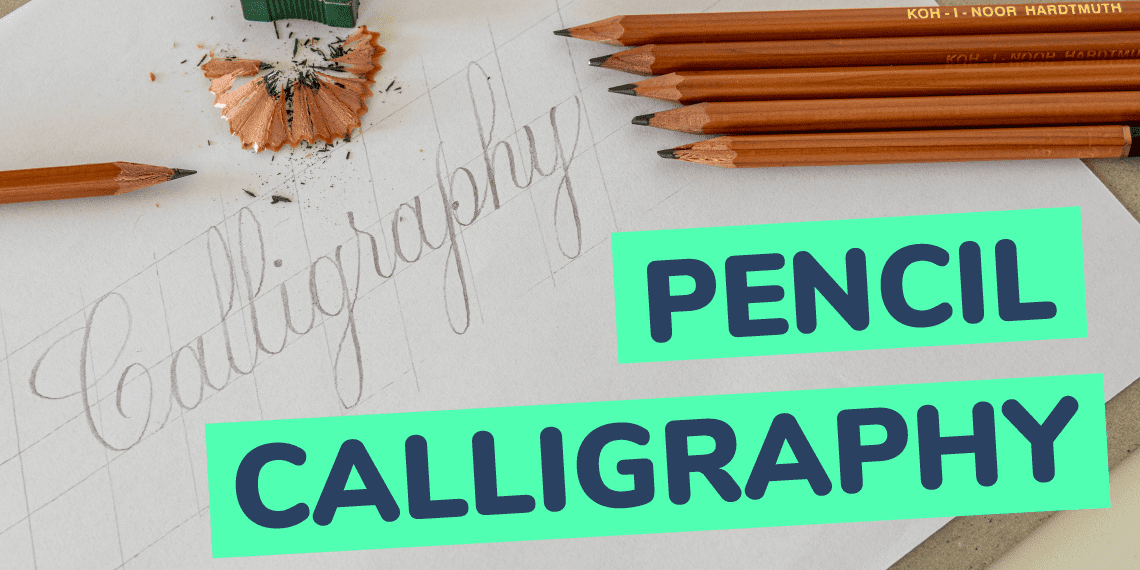
I realy appreciate the spirt behind the tutorial.
Thank you bro!
I want tutorial
Realmente una maravilla tu forma de explicar los pasos para poder iniciar en este arte. Lo haces ver tan fácil que inspira a comenzar a trabajar. Gracias por compartir tus conocimientos,
Thank you so much for the kind words! 🙂
really cool thanks for the tutorial.
Thank you, Carla! Im glad to hear that you enjoyed the tutorial.
Thanks very much, Alex. An excellent tutorial very clearly explained. I appreciate the work you’ve put into this and into the worksheets too.
Thank you, Drew. Im so glad to hear that 🙂